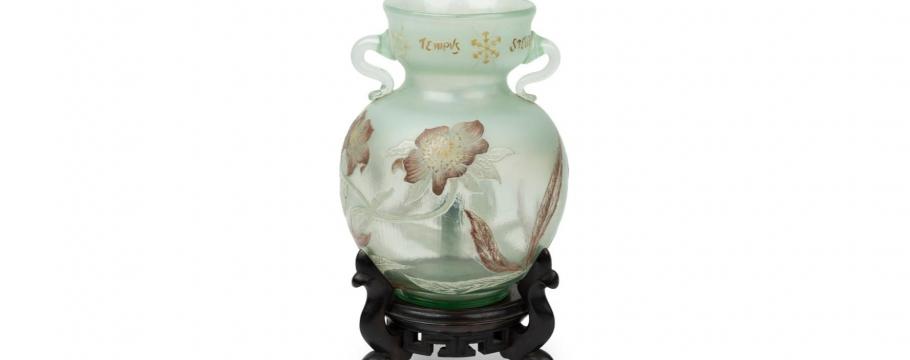
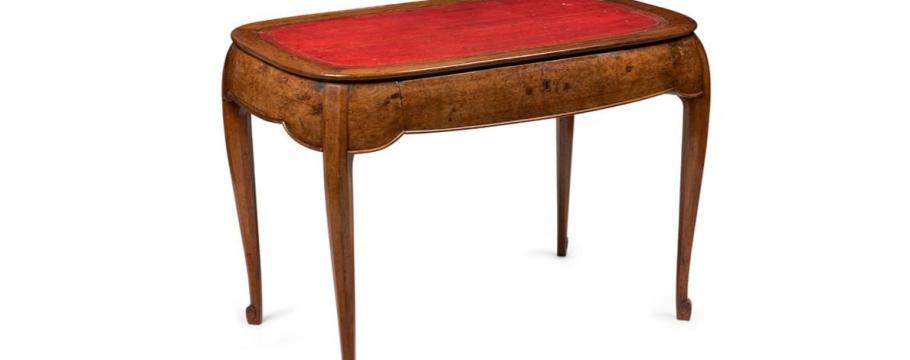
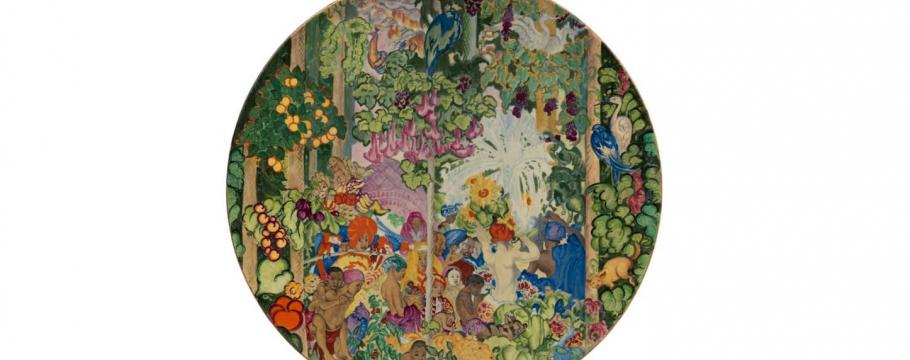


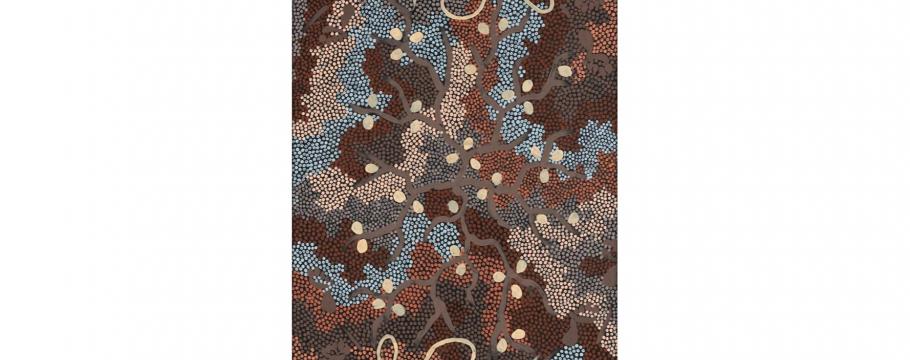

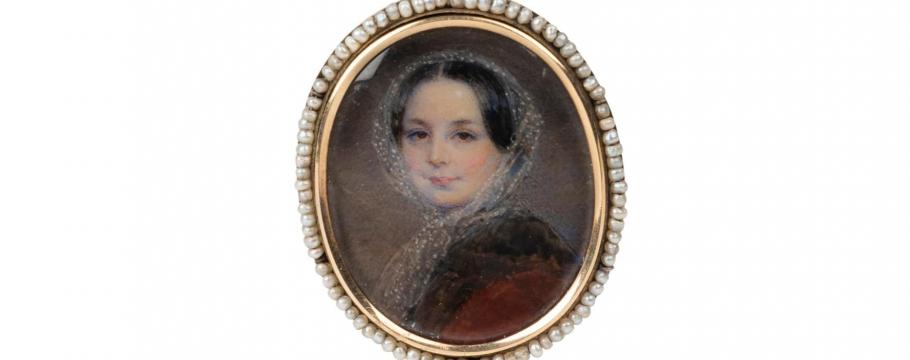
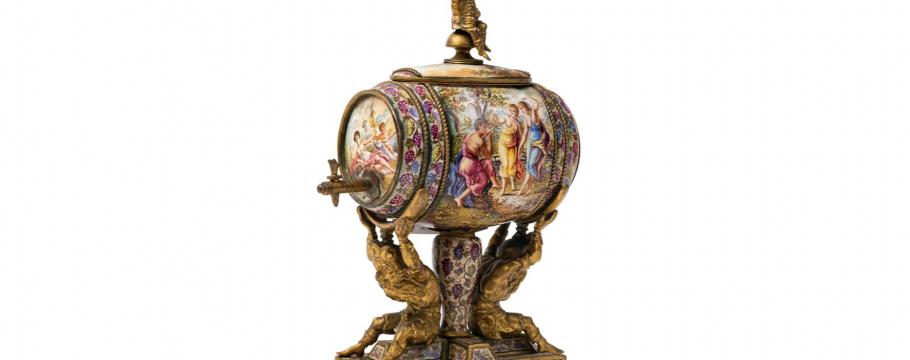

Melbourne "Interiors" auction a facinating collection
Author: Richard Brewster | Posted: 23rd March, 2021
A circa 1900 twin handled opalescent and enamelled glass vase titled ‘Tempus Stellae’ (lot 54) by French artist Émile Gallé (1846-1904) is one of the major highlights at Melbourne-based Gibson’s Auctions Interiors sale from 11am Sunday March 28 at 885-889 High Street, Armadale.
One of the major innovators of the French Art Nouveau movement, Gallé was deeply religious and many of his pieces feature religious symbols – including this vase where the words “Tempus Stellae” mean “time of the star”. The phrase has been taken from the story about the arrival of the wise men in Bethlehem to pay homage to the Christ child.
Noted for his art nouveau glass art and furniture designs, Gallé also founded the École de Nancy or Nancy School, a design movement in Nancy, France where he was born, to encourage the arts in that city – and several museums purchased his works, which were also imitated by other glass and ceramic firms.
Comprising 662 lots, the Interiors auction contains a comprehensive range of fascinating items including a circa 1925 Süe et Mare writing table (lot 61) with a catalogue estimate of $10,000-$15,000.
The rectangular mahogany desk is from the workshop of Louis Süe & André Mare (1875-1968) and is from the Sir Tristan and Lady Antico collection in Sydney and Copeland & De Soos.
Another important item is a large circa 1930s Clarice Cliff enamelled porcelain Sir Frank Brangwyn series wall charger (lot 64) signed and detailed on the back ‘The Brangwyn panels designed for the Royal Gallery of the House of Lords 1925, first exhibited at Olympia 1933, painted by Clarice Cliff from one of the panels, A. Wilkinson, Staffordshire Pottery, Burslem, Staffordshire, NO. 40’.
Created from 1939-1945, the charger is part of a series by Clarice Cliff from panels painted in 1924 by Sir Frank Brangwyn to adorn the House of Lords Royal Gallery walls to commemorate deceased soldiers in World War I.
Though rejected for being full of ‘insistent motives of ill accord with the Waterloo Chamber’ by the Fine Art Commission of the time, Cliff made three of the panels into chargers after they were displayed at the Idea Home Exhibition in Olympia.
One of the most valuable lots in the auction is a large circa 1910 French Daum ‘Eucalyptus’ cameo glass lamp (lot 78), signed Daum Nancy and with a catalogue estimate of $30,000-$50,000.
Founded in 1878 Jean Daum (1825-1885), Daum is a crystal studio based in Nancy. His sons Auguste (1853-1909) and Antonin (1864-1931) oversaw the studio’s growth during the burgeoning art nouveau period and currently Daum is the only commercial crystal manufacturer using the pâte de verre (glass paste) process for art glass and crystal sculptures – a technique in which crushed glass is packed into a refractory mould and then fused in a kiln.
The auction contains art by Australian Indigenous and overseas artists including French painter Jean Peltiere’s (1907-1984) Contemplation 1944 (lot 75) and Clifford Possum Tjapaltjarri’s (circa 1933-2002) Bush Tucker Dreaming 1984 (lot 290).
Another highlight is a pair of 19th century German patinated bronze equestrian cavalier figures, each modelled as a horseman astride a rearing horse, (lot 185) and a 19th century seed pearl mounted portrait miniature brooch (lot 475) by artist George Richmond of Julia Tatham (1811-1881), daughter of Charles Heathcote Tatham (1772-1842).
Around 1826, Richmond fell in love with Julia who was 14 at the time after her father engaged him to give her drawing lessons.
Old Tatham encouraged the romance until a diminishing fortune brought a change of mind after a rich and elderly suitor expressed interest in Julia.
Encouraged by a friend who loaned Richmond £40, the young couple eloped to Gretna Green where they were married on January 24, 1831. Not long after, old Tatham was persuaded about Richmond’s promising future, forgave them, and the two had a long and happy marriage with 15 children, 10 of whom survived infancy.
One of the more intriguing lots is a 19th century Viennese enamel perfume dispenser modelled as a wine barrel (lot 511).





